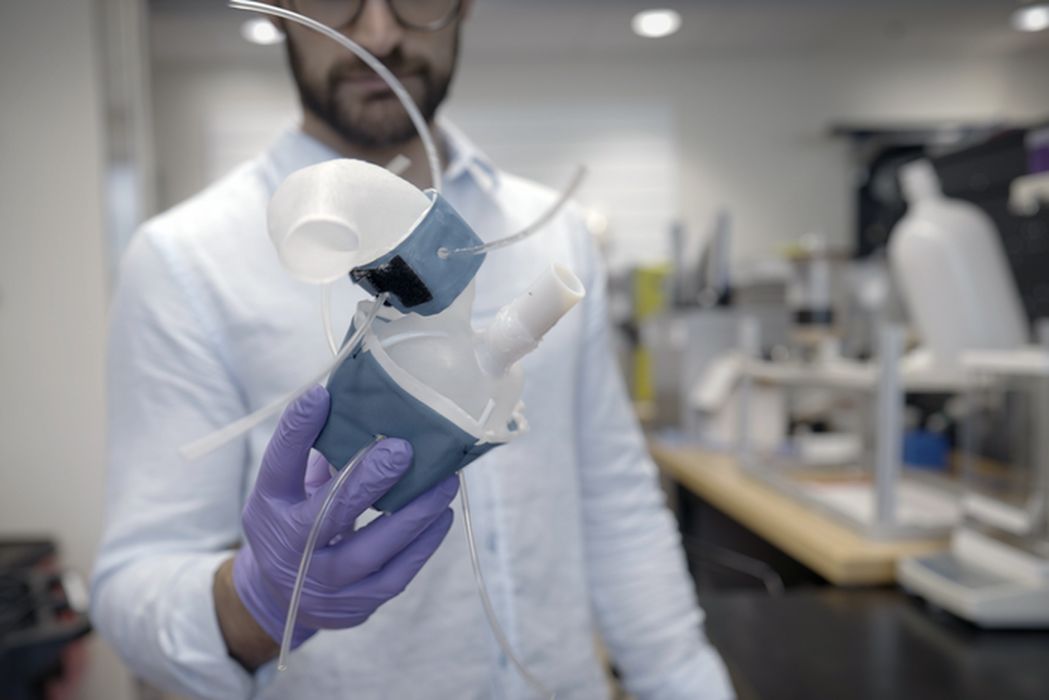
It’s a 3D printed heart, but not quite what you were thinking.
There’s been plenty of discussion and hope around the idea of 3D printed organs. With shortages of donor organs for transplants, as well as ongoing issues with tissue rejection, the thought of 3D printing replacement organs with one’s own tissue is highly desirable. Much research is currently underway to work towards that goal, although it is very far off at this point.
Today’s development is not that at all. But it is a 3D printed heart.
As you can see in the above image provided by MIT, researchers have developed a design for a replacement mechanical heart to be made from 3D printed parts.
That’s not a 3D printed biological organ, but it does perform the same actions.
The researchers have taken full advantage of 3D printing’s ability to produce custom designs. In this project they were able to 3D scan a patient to obtain the precise geometry of the actual heart. Then, by adjusting their 3D models, they were able to 3D print the parts for the heart so that they would fit correctly into the patient.
MIT doesn’t explain in detail how the parts were produced in their press release, but they do say they used a “polymer-based ink” to produce a “soft, flexible shell”. In other words, likely a form of TPU made with a resin 3D printing system for extreme accuracy.
How does it work? MIT explains:
“To mimic the heart’s pumping action, the team has fabricated sleeves similar to blood pressure cuffs that wrap around a printed heart and aorta. The underside of each sleeve resembles precisely patterned bubble wrap. When the sleeve is connected to a pneumatic system, researchers can tune the outflowing air to rhythmically inflate the sleeve’s bubbles and contract the heart, mimicking its pumping action.”
Is this 3D printed heart intended for actual patient use? No, not at all. Instead the intent is to use it as a platform for pre-surgery experiments.
The experimental program is quite interesting. Since the artificial heart can mimic true heart activity, the researchers could, for example, swap in different valve styles to observe their effect on blood flow and heart efficiency. In this way a surgeon could determine the best possible options for a future surgical procedure.
In a way this is like the digital twin concept, except that it’s a physical twin. They explain further:
“Doctors commonly treat aortic stenosis by surgically implanting a synthetic valve designed to widen the aorta’s natural valve. In the future, the team says that doctors could potentially use their new procedure to first print a patient’s heart and aorta, then implant a variety of valves into the printed model to see which design results in the best function and fit for that particular patient. The heart replicas could also be used by research labs and the medical device industry as realistic platforms for testing therapies for various types of heart disease.”
Evidently all hearts are differently shaped, and this approach provides a platform where better solutions can be developed for heart procedures.
Via Eureka Alert
